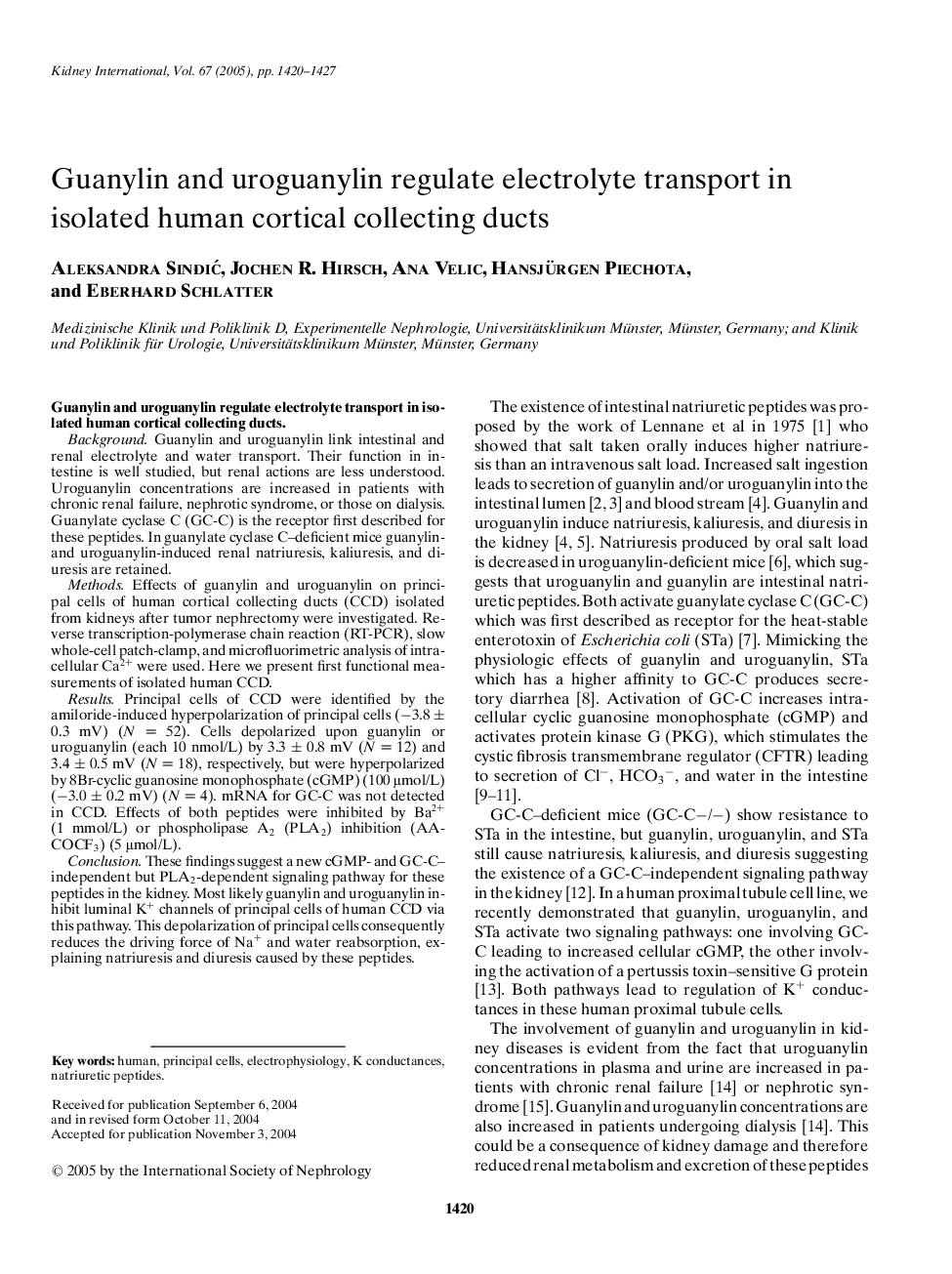| Article ID | Journal | Published Year | Pages | File Type |
|---|---|---|---|---|
| 9310744 | Kidney International | 2005 | 8 Pages |
Abstract
These findings suggest a new cGMP- and GC-C-independent but PLA2-dependent signaling pathway for these peptides in the kidney. Most likely guanylin and uroguanylin inhibit luminal K+ channels of principal cells of human CCD via this pathway. This depolarization of principal cells consequently reduces the driving force of Na+ and water reabsorption, explaining natriuresis and diuresis caused by these peptides.
Related Topics
Health Sciences
Medicine and Dentistry
Nephrology
Authors
Aleksandra SinðiÄ, Jochen R. Hirsch, A.N.A. Velic, Hansjürgen Piechota, Eberhard Schlatter,
